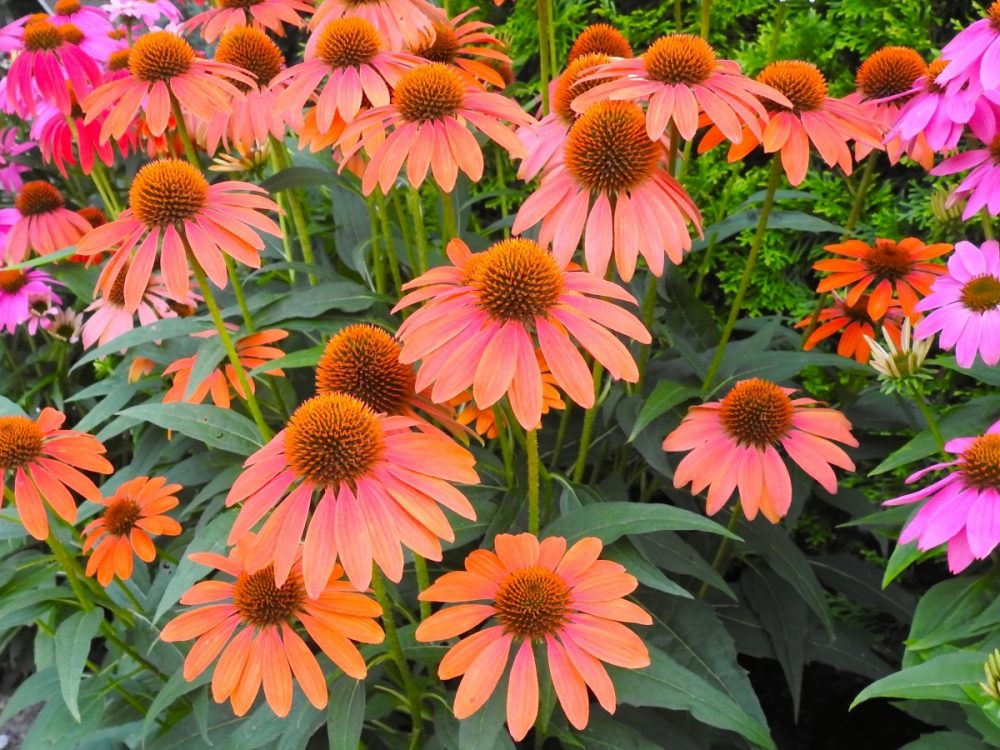
Coneflower varieties now include a broad range of colors beyond purple. Photo by Kate Besler/Shutterstock
When most people think of echinacea, the average old purple coneflower comes to mind. Let’s face it: For flower arrangers, it can get pretty boring. But today there are so many coneflower varieties and cultivars of Echinacea purpurea that you might not even find the ubiquitous purple one among them. Thanks to scientists and growers, this plant now comes in an array of colors. Whites, oranges, yellows, light pinks, dark pinks, and light green are just a few of the colors that you might find at your neighborhood garden center. I have several of these planted in my garden. It’s always exciting to have something fresh and unusual to cut and use in your arrangements.

These double pink coneflowers are known as ‘Double Delight.’
In the garden, echinacea can be very effective. Usually grouped in masses, it will give off a brilliant array of colors. According to Rick Mikula, author of Garden Butterflies of North America, echinacea is one of the top 12 perennials for attracting butterflies. It usually starts to bloom by the end of June and continues blooming through October. Deadheading this plant will help encourage repeat blooms. Granular fertilizer should be applied monthly and liquid fertilizer biweekly. This will keep your plant healthy and blooming to ensure the most cuts for your arrangements.
Echinacea purpurea is a member of the aster family, Asteraceae. A German by the name of Konrad Moench gave us the name echinacea in the late 1700s. The Greek word echinos references a hedgehog. Since the bracts in the middle of the flower are sharply pointed, he saw the resemblance to a hedgehog. From that day forward, some have called the flower a hedgehog coneflower.

‘Green Envy’ coneflowers in a border with American beautyberry
Traditionally, people used the flower medicinally to help fight the effects of the common cold, toothaches, burns, sore throats, and even poison ivy. Today some still use this plant as a blood purifier, antiviral and antibacterial agent, immune system strengthener, and even as an antidote for snakebites! Your local health food or drug store likely stocks a bottle of echinacea pills on its shelves.

A bouquet of ‘Fragrant Angel’ (the white flowers) with ‘Orange Meadowbrite’ and ‘Mango Meadowbrite’
Coneflower Varieties (Beyond Purple)
Now more than ever, with all the color choices, this flower gives us many opportunities to use it in arrangements. Here are some of my favorites:
- Mango Meadowbrite™: rich mango gold with a bright orange center, fragrant
- Orange Meadowbrite™: blood orange flowers and sweet orange tea fragrance
- Pink Double Delight: double blooming pink with very strong stems to hold the weight of the flower
- Green Envy: plush purple petals at the base change colors to white and then light green. The brown bract is green in the center. This flower is simply amazing when complementing cool green-and-white color combinations.
By Troy Rhone | Photos Courtesy Of White Flower Farm



